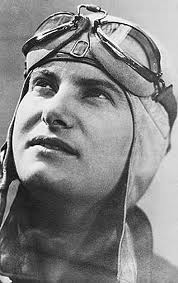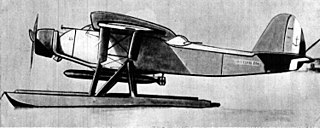
The Jodel D.11 is a French two-seat monoplane designed and developed by Société Avions Jodel in response to a French government request for a low-wing aircraft for use by the nation's many emerging flying clubs.

Between 1920 and 1951 the Société des Moteurs Salmson in France developed and built a series of widely used air-cooled aircraft engines.

The Farman F.120 and its derivatives were a family of multi-engine airliners and bombers of the 1920s built by the Farman Aviation Works in France.

The Mauboussin M.200 was a French racing monoplane built by Fouga. It was a low-wing cantilever monoplane with a fixed tailskid landing gear. It had an enclosed cockpit for a pilot, and was powered by a Régnier 85.8 kW (115 hp) 4E.0 engine. It first flew on 21 March 1939, and in May 1939 established new FAI records for an aircraft of its class.

The Farman F.300 and F.310 were airliners built in France in the early 1930s. They were high-wing strut braced monoplanes with fixed tailskid undercarriage with a trimotor layout popular with several manufacturers of the time. The cockpit and passenger compartment were fully enclosed. Most saw service in Farman's own airline, whose twelve F.300 variants made up half its fleet in 1931.

Hélène Boucher was a well-known French pilot in the early 1930s, when she set several women's world speed records and the all-comers record for 1,000 km (621 mi) in 1934. She was killed in an accident in the same year.

The Latécoère 8 was a French airliner built in 1921, but only to the extent of a single example. It was a conventional two-bay biplane with unstaggered wings and fixed tailskid undercarriage. The five-seat passenger cabin was fully enclosed and featured a celluloid panel on its ceiling as an emergency exit. The pilot sat in a separate, open cockpit to the rear of the passenger cabin. A single engine was mounted in the nose, fitted with tall pipes to carry the engine exhaust clear of the upper wing. Construction was of metal and wood, and was inspired by techniques used on the Breguet 14.

The Latécoère 21 was a French flying boat built in 1925 for use by Lignes Aériennes Latécoère as an airliner on routes between France and North Africa. It was the first of the Latécoère flying boats, and the first aircraft to deliver mail between Marseilles and Algiers. It was a conventional design for the era, with a monoplane wing mounted parasol-fashion. Warren truss-style struts braced the wing to stub wings that acted as sponsons for stability while on the water. The twin engines were placed in tandem push-pull configuration on the wing. Up to seven passengers could be seated in an enclosed cabin, and two pilots sat side by side in separate open cockpits.

The Latécoère 32 was a flying boat built in France in 1928 for use on Aéropostale's mail routes to North Africa.

The Latécoère 290 was a torpedo bomber floatplane produced in France during the 1930s. Designed by Latécoère in response to an Aéronavale specification for such an aircraft, the 290 was based on its successful Laté 28.3 mail plane. It was a conventional high-wing, strut-braced monoplane that carried a single torpedo externally under the fuselage.

The Levasseur PL.10 was a carrier-based reconnaissance aircraft developed in France in the late 1920s. It was a conventional, single-bay biplane along similar lines to Levasseur's contemporary designs for the French navy, including a watertight, boat-shaped fuselage, small underwing floats, and undercarriage that could be jettisoned in flight in order to improve the changes of a successful ditching.

The Caudron C.240 was a four-seat touring aircraft produced in France in 1931. It was a single-engined, low-wing, cantilever monoplane constructed using wood and metal. It had fixed, conventional landing gear.

The Leopoldoff Colibri is a French-built light sporting and trainer biplane of the 1930s.

The Peyret-Mauboussin PM XI was a French high-wing touring aircraft of the early 1930s.
Peyret-Mauboussin was a French aircraft manufacturer of the late 1920s and early 1930s.
Avions Mauboussin is a French aircraft manufacturer created in the 1930s.

The Salmson 9 AD was a family of air-cooled nine cylinder radial aero-engines produced in the 1930s in France by the Société des Moteurs Salmson.

The SNCAO 30 was a French single-engined monoplane flying boat two-seat trainer. Although it was ordered into production for the French Navy, only two prototypes were built.

The Mauboussin M.112, M-12 or Mauboussin M.XII was originally called the Peyret-Mauboussin PM XII and was renamed when Mauboussin founded his own company in 1931, ending his partnership with Louis Peyret. It was a French, single-engine, two-seat, low cantilever wing touring monoplane. At least six were built.



















